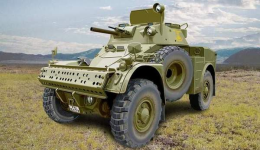I guess that my view of tank usage is influenced greatly by my time in Shilo working with the Germans. They thought of panzers in battle groups of no less than two panzer companies acting in concert with an attached panzerjaeger company, a heavy recce element (a platoon of panzers or Marders and/or ATGM dets) for the flanks, and an artillery battery and sometimes a mortar group. Speed and violence.
In my day, like
@Fishbone Jones's, the Canadian armoured regiment had a recce squadron but it was really a brigade recce squadron (and then just a troop). At best the regiment had a troop at it's disposal. But that isn't the way that it has to be. Look at an American combined arms battalion which has one or two 14-tank armor companies, two or one IFV companies and a sole scout platoon (for the battalion's use) with almost no organic tail (it comes from the BSB). Brigade recce is done by the ABCT's cavalry.
It's a perfect time to look at the whole structure using basic principles. Canada scrapped all of its heavy elements around the turn of the century, abandoned almost all meaningful heavy armour training for the better part of two decades creating a generation of senior leaders with minimal LSCO experience and has now been exposed to what our most likely opponent's doctrine, TTPs and strengths and weaknesses are. There are scores of new weapon systems and others under development. There are promises of fresh money. It's a great time to design a Cold War Army 2.0 from the ground up. But. . . don't. . . waste. . . time trying to find a consensus. Canadians are real crappy at committee structures that drag simple functions into multi-year programs.





